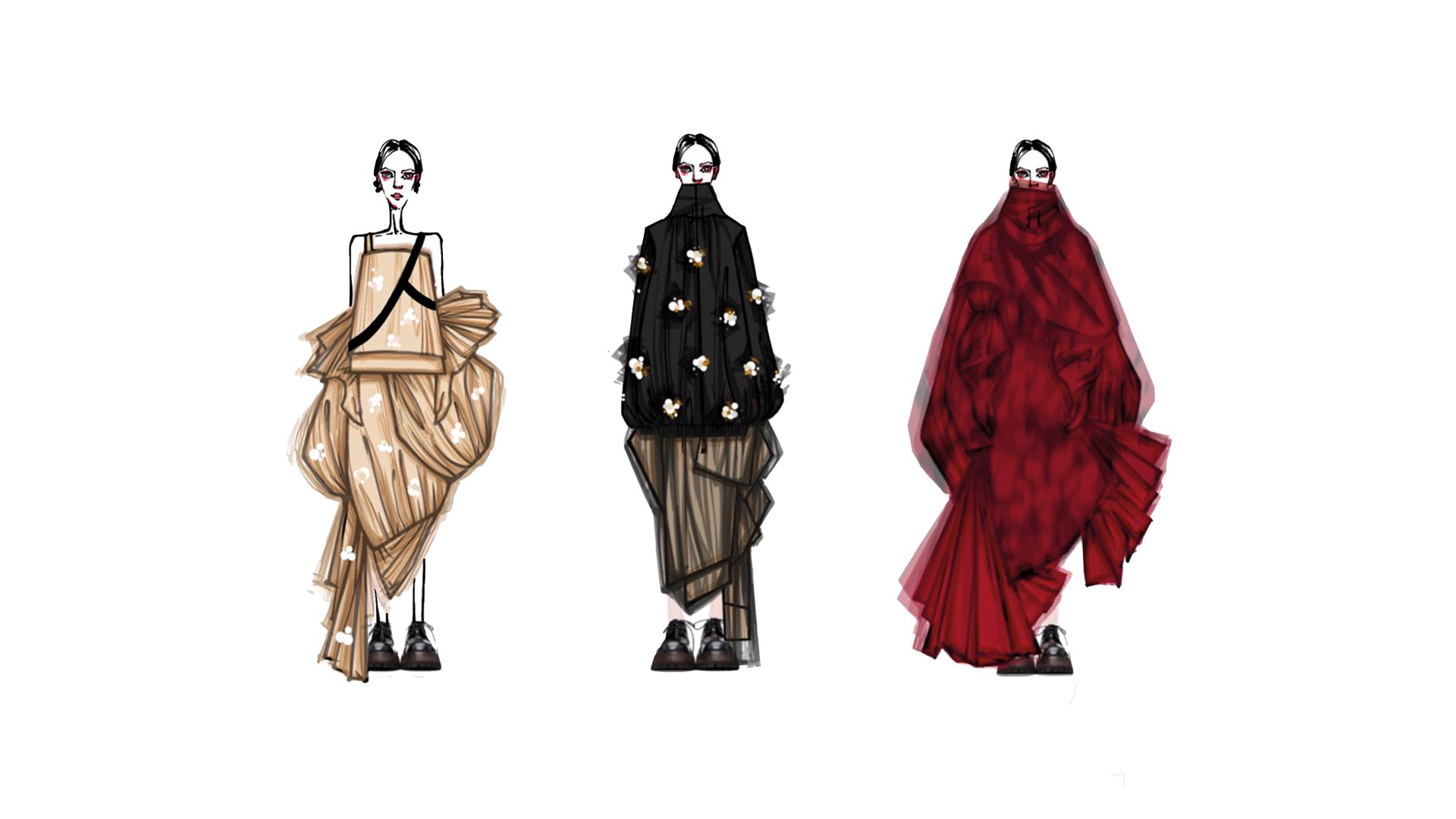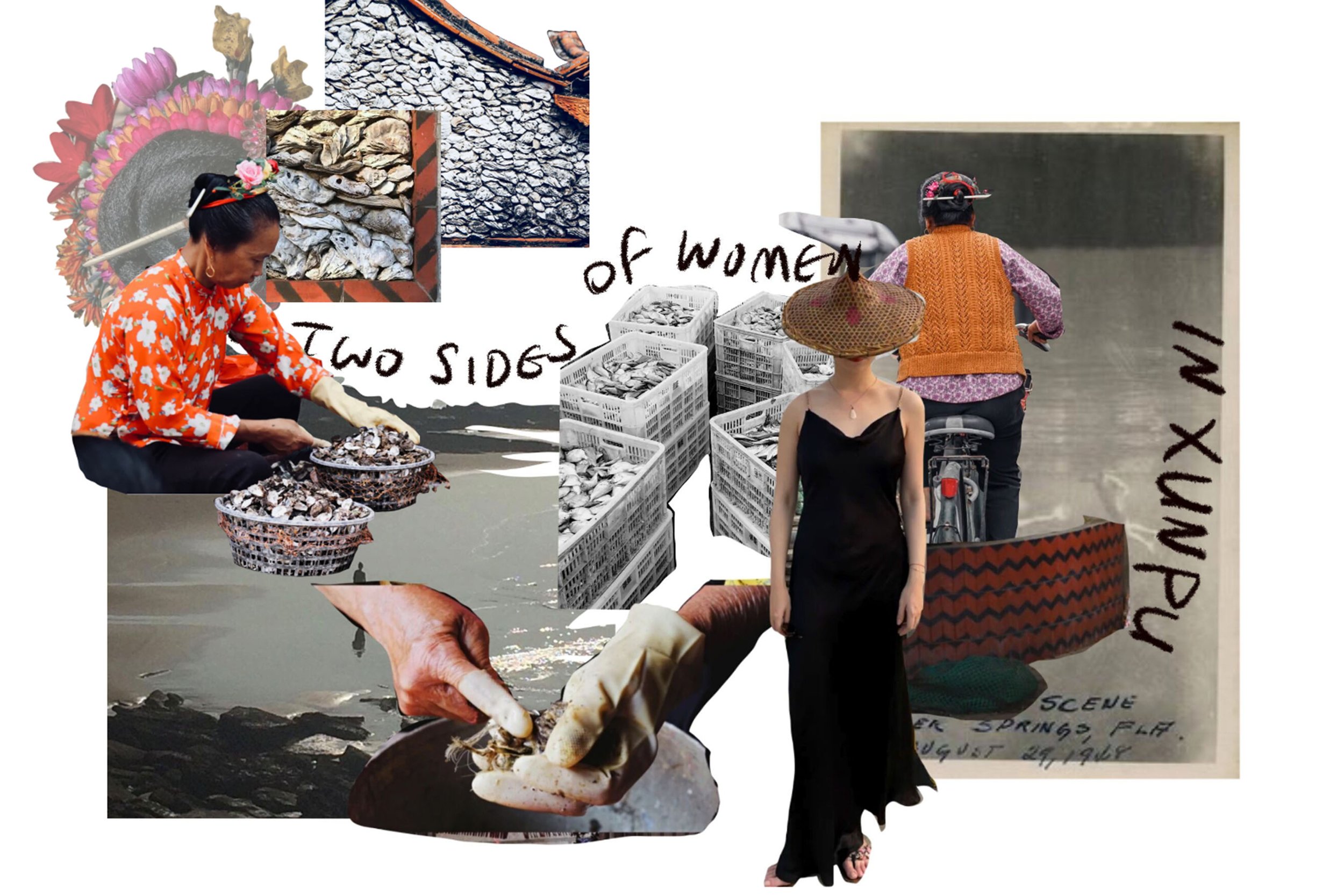Xue Wang
Redress Design Award 2024 finalist
Bio
Xue Wang is a Finalist of the Redress Design Award 2024. She holds a bachelor’s degree in Fashion Design from Fuzhou University, China. Xue is also studying for her MA in Fashion Marketing Management from Istituto Marangoni, Italy, and MA in Fashion Design from Donghua University, China.
“We may not have the ability to change the pollution of factories, but as designers, we can remain steadfast in our commitment to sustainable concepts.” – Xue Wang
redress Design Award Collection
Xue’s Redress Design Award collection, ‘Xiapu · Abundant Wind and Blooming Flowers’, honours the cultural heritage of fisherwomen from Xiapu Village in Fujian, China, wearing flower crowns. The collection is made using zero-waste patterns and three-dimensional cutting. The garments are designed to be worn in multiple ways, for different occasions, to enhance their longevity. Snow incorporates seashells collected from the village by laser-cutting and sewing them onto twisted end-of-roll factory fabrics, and infuses the designs with reactive dye digital printing, which reduces water and air pollution.
Q&A WITH THE DESIGNER
1. Who or what inspired you to pursue sustainable fashion, and inspired the creativity behind your Redress Design Award collection?
I was inspired by my graduate advisor, as well as some factory visits undertaken through my university in Fujian province, China. This included some small fabric printing and dyeing factories, plus large and famous Chinese garment companies. During these trips, I witnessed firsthand the efficiency of the factories’ mechanisms, but also realised their wasted resources and environmental pollution. In addition, I was inspired by the cultural heritage of the ‘zhan hua wei’ hairdressing technique for fisherwomen from Xunpu Village in Quanzhou, Fujian, China.
2. What makes your Redress Design Award collection uniquely sustainable? (considering sustainable design techniques you have used in your collection, e.g. zero-waste, upcycling, reconstruction; or waste sources you have chosen)
The sustainable design techniques I used in my collection are zero-waste, upcycling, and reconstruction. During the design process, I experimented with draping so that each part of the garment could be reconstructed to achieve the best possible effect, using as little fabric as possible.
I upcycled end-of-rolls and unused fabric pieces from Fujian factories and used digital printing to reduce environmental impact. Locally sourced seashells are used as decorative elements by laser-cutting different shapes to compose decorative patterns. White cotton twill from sample waste are reconstructed into new looks.
3. What is your career dream or goal? How do you see yourself developing in sustainable fashion in the future?
I am working towards developing as a sustainable fashion designer in China, with the hope of solving real problems through design and marketing.
4. As a sustainable fashion designer, what is one item you must always keep with you?
Although not strictly a tangible item, something I will always carry is my steadfast commitment to sustainability. While we may not have the ability to change the pollution of factories, as designers we can limit it by choosing more sustainable options.
5. Anything else you would like to share with us about you or your collection?
I did a lot of research on the empowering cultural heritage of ‘zhan hua wei’, a hairdressing technique used to decorate the heads of the Xunpu fisherwomen. These hardworking women assist their husbands in digging for oysters, supporting their families with income. All the while, they wear flowers on their heads, reflecting their inner strength, bravery, optimism, and self-confidence. Through my sustainable collection, I hope to celebrate the good qualities of the Xunpu fisherwomen, bringing their beauty to light.
news
REGION:
Italy
DESIGN TECHNIQUES:
Upcycling, Zero waste, Reconstruction
COLLECTION:
Womenswear









